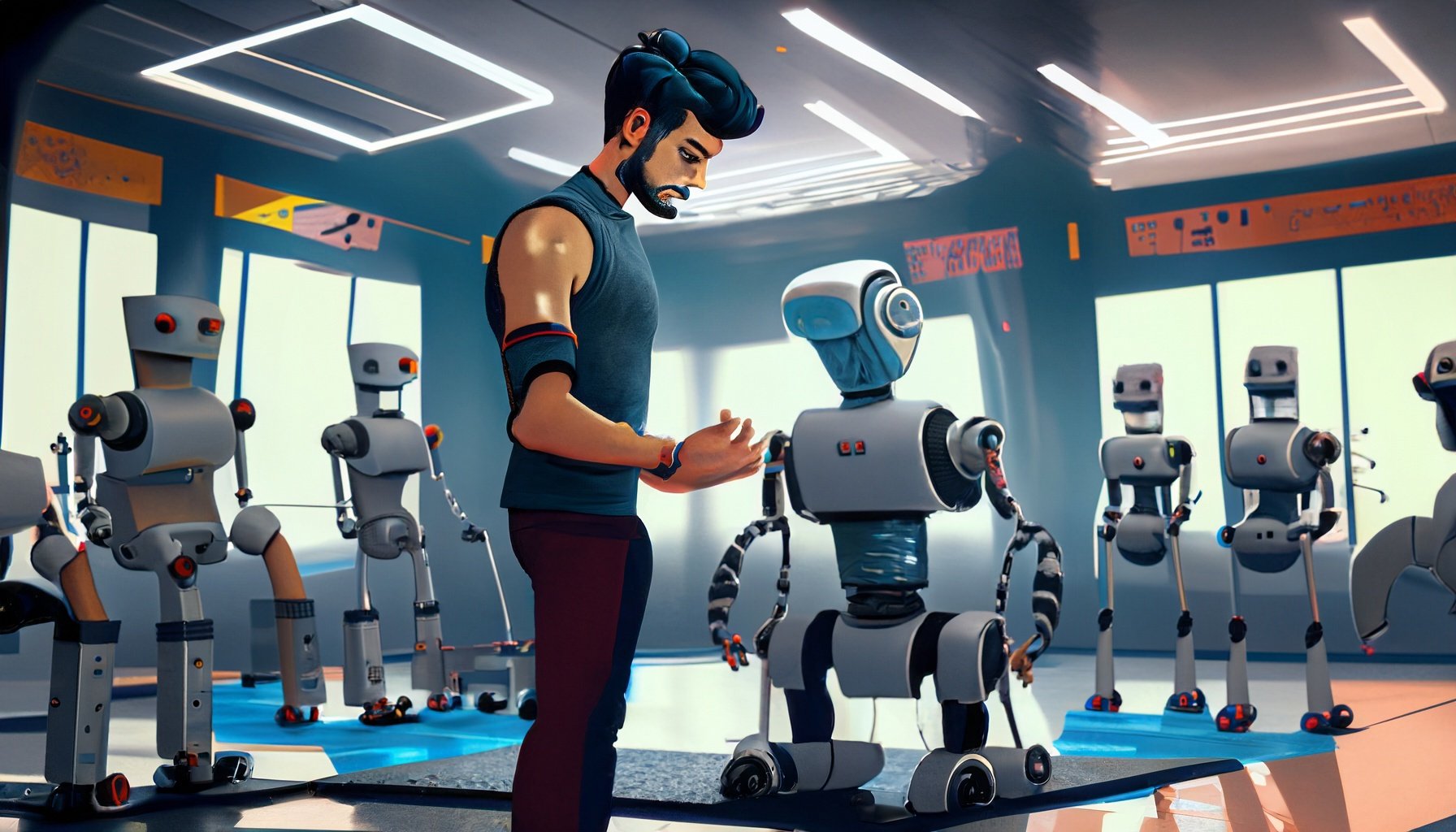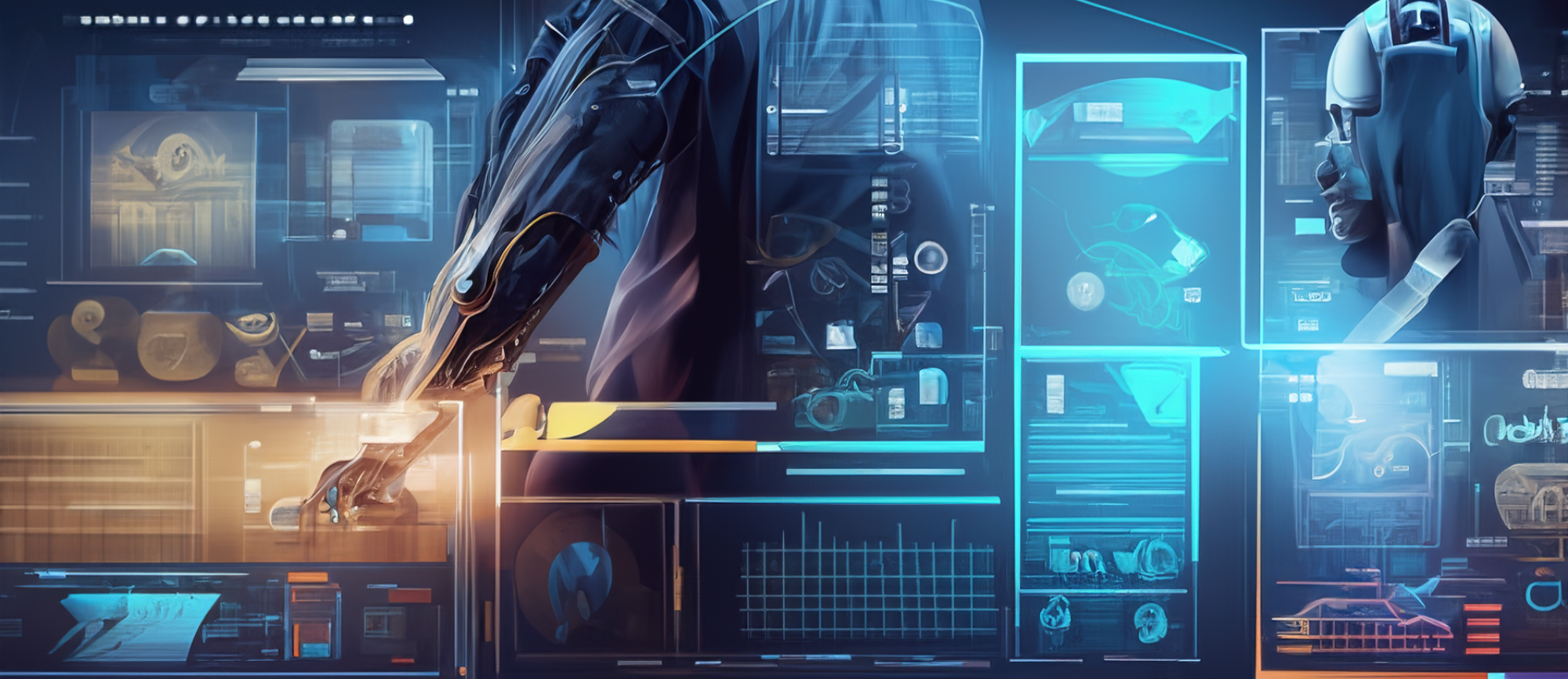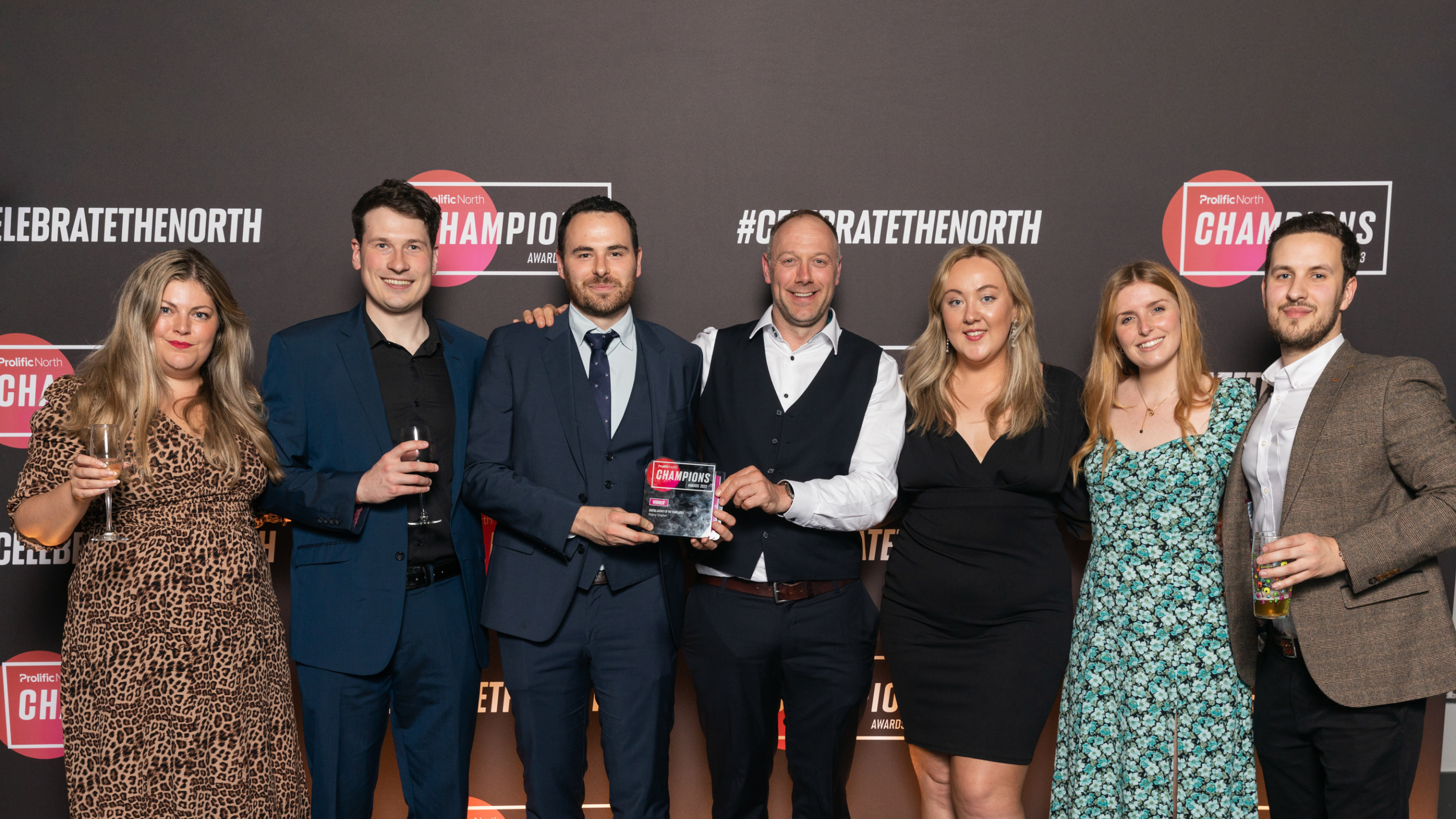Like most of the digital community (and to be fair the rest of the world), we've been following the exponential development of Generative AI tools for the last couple of years. The advancements have been phenomenal and terrifying in equal measure.
If you've not heard about AI in 2023, you must live under a rock. With what feels like an overnight explosion of tools and reports on the terrors of AI, it's been hard to avoid the many questions about how it could affect all aspects of our lives; our very existence as professionals and even as a species.
In its many guises, AI is making unfathomable strides on a daily/hourly/minute by minute basis, and the creative team at Enjoy is constantly asking how we can use it as part of our creative process.
Commercially, AI is in many ways (as of October 2023) still a very grey area and we've been trying to make sense of the complicated web of legal issues that surround it.
But for now we're going to dial the scaremongering down a notch or two, and highlight some of the more optimistic ways Artificial Intelligence can help creatives and designers level up work commercially for our clients. Let's start with a brief recap

What's generative AI all about?
Generative AI is a type of artificial intelligence that focuses on creating or enhancing content, such as text, images, audio, or other data through the use of generative models.
From now on we'll call them AI tools.
Some of the more recognisable names you may have heard of in this area are OpenAI, Dall-E, Stable Diffusion, MidJourney and Firefly.
Typically, these tools generate content by the use of a "prompt"; a written description of the image you have in your head, or the content you want to write. Or if you're a politician or lawyer, it could be a speech or legal brief.
Generative AI models are typically designed to generate content that is not copied from existing examples, but produced based on patterns and structures learned from "training data".
What's training data?
Training data is essential for instructing AI systems to identify patterns, make predictions, and carry out tasks. The quality and amount of this data significantly affects the accuracy and capacity of the AI to adapt to new situations.

Quality is crucial
The meticulous sourcing and preparation of training data is crucial. At this time it's mostly people who annotate, or label visual material they initially provide to the AI, and because of this human factor, data in general can be skewed or biased based upon those training the system, as well as the AI getting it wrong or "hallucinating".
It's not just about the quality of the data used for training, but also where it came from. Has the creator of the source material allowed their designs, illustrations and photography to be used as reference material?
Speaking both professionally and personally, I work with other artists and creatives who produce original and inventive work and I want to see them recognised and rewarded for it, and certainly not blatantly ripped off.
A lack of transparency around training data sources raises crucial ethical concerns around using Generative AI tools commercially, something professionally we should ALL care about.
Transparency over training data
If you've ever used one of the many Generative visual AI tools, you may at some stage have generated an image that feels a bit too "familiar". This could be attributed to the amazing prompt you wrote, or, questionable source images the AI has been trained with. It's disconcerting and can raise concerns over potential copyright issues. How can we be sure that we're OK to use what we generate?
Many paid-for generative AI tool providers have begun to provide that much needed clarity around the use of generated images for commercial use, but again, it's still not completely clear.
The case for a lot of paid-for AI tools is the ability to use the generated images commercially, but in many situations you don't own the image, you can't copyright it and others could use your image as training in the creation of their own images, as well as use it themselves commercially! Awkward.
Thankfully, we're starting to see clearer and more transparent and ethical ways we can use Generative AI safely and commercially.
Taking stock of using generative AI commercially

More and more media and technology companies are tackling this head-on - ethically and transparently - supporting artists, illustrators and photographers through properly licensed use of their content.
One of the most common sources for imagery for creatives and content creators alike is the trusted "stock library" - millions of images, illustrations and videos that can be purchased for commercial use. But even with a vast number of assets to pick from, it can still be difficult to find exactly what you're after.
By licensing their content through providers like Getty, Shutterstock and Adobe, artists are compensated when their images are used to generate new licensable content through on-site AI tools, and customers are able to tailor content to their ultra specific needs knowing that the originators are compensated.
Improved workflows for creatives and designers
As creatives we're always looking for the latest tools and tricks to augment and enhance our work and workflows, so it came as no surprise when Generative AI tools started to appear in our production toolkit, we were keen to try them out and see how they could help us expedite creative processes.
(This article is in no way an endorsement of one product over another, but more a snapshot of how it played out here at Enjoy Digital and weaved its way into our processes.)

Fight fire with Firefly
It started in March 2023 when Adobe launched the Beta of a generative tool called Firefly, a tool not so dissimilar to others out there but with a more user-friendly interface.
Firefly is a suite of AI tools - text to image, generative fill and text effects. Adobe continues to add and test other features on the platform.
It was fantastic to see what it was capable of. Even though it wasn't totally capable of consistently producing production-ready content at the time, it was great fun to test it out and even embrace some of the quirks.
As of time of writing, Adobe have launched Firefly Image 2 Model (beta) that significantly raises the bar from the Image 1 Model examples in this article.

Making Sensei out of it all
In May 2023, Adobe launched a new Beta version of Photoshop, taking their Sensei AI technology used in Firefly into Photoshop and providing a glimpse of how these generative features could be integrated into industry-leading apps and creative production workflows.
And then, in September, the shift came.
Generative AI features arrived in the official Photoshop release which coincided with updated terms of use that allows creations to be used commercially, and with a clear commitment to creators. This commitment, alongside those of other providers, begins to provide some well needed clarity and reassurance. It was like someone had pressed the big green "go!" button.
Upon launch the quirks are still very much evident, as to be expected, and it delivers the occasional nightmare fuel curveball, which I guess is all part of the learning process...

How we're using generative AI
As we stand right now, Generative AI is not the silver bullet to all your creative and content creation needs, so creatives, designers, photographers and artworkers can breathe a slight sigh of relief.
What Generative AI is immensely useful for right now is enabling us to iterate to a higher fidelity faster, and generated outputs can now be used safely, commercially and ethically.
We're constantly evaluating and testing out new tools weekly, using AI transparently with our clients in a number of areas to enhance our creative workstreams.
Moodboards and Art Direction
As well as creating moodboards the good old fashioned way, we can generate ideas for compositions, design cues and photographic styles to assist photographers as part of any creative and art direction provided.
Enhancing storyboards and storytelling
Creating memorable experiences and telling stories is a crucial part of what we do. We use Generative AI to help craft visual elements that enhance the written narrative and augment photographs to convey our vision for video shoots and motion graphics projects.
Ideation and Concept Visualisation
Developing concepts or ideas into draft visual representations for more immediate feedback.
Augmenting design and photographic work
Alongside our abilities to manipulate and retouch images, we can carefully add in additional elements to our photography, potentially avoiding costly reshoots.
Trust, but verify
A word of caution. As tempting as all of this technological advancements can be, we have to curb our enthusiasm a little and avoid being dazzled by the new "shiny tool on the block" and putting all of our faith in it.
We still have to use caution and know the limits of the technology, no matter how spectacular it appears. No matter how clever it seems, it can't pick up on the subtleties quite like a human can. Well, not yet anyway.
A generated image of a man sitting in a chair may look perfect until you look at one of his seven-fingered hands* or his ear-less head.
*Yes, more AI tools have now learned how to recreate hands accurately, so the joke's on me.
AI isn't going anywhere. Embrace it.
We're only at the beginning of the impact AI will have on our lives. To creatives, this can feel truly magical and terrifying in equal parts. It provides us with the opportunity to expand upon our own processes and help us dream up better experiences for our clients.
It also provides us professionally with the poke in the ribs to evaluate where our skills and value truly lies, improving us as creative professionals. Like it or not, we have to embrace the opportunities AI offers.
With more transparent and ethical commercial processes that provide protection to creators that will continue to be improved upon, us creatives, designers, artists and photographers alike may find harmony with our future robot overlords.

Ready. Steady. Grow!
We've helped some of the world's biggest brands transform and grow their businesses. And yours could be next.
So if you've got a business challenge to solve or a brief to answer, we'd love to hear from you. Simply complete this form and one of our experts will be in touch!




